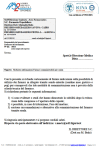The Role of the Pharmacist in Selecting the Best Choice of Medication Formulation in Dysphagic Patients
- PMID: 36013259
- PMCID: PMC9410388
- DOI: 10.3390/jpm12081307
The Role of the Pharmacist in Selecting the Best Choice of Medication Formulation in Dysphagic Patients
Abstract
Usually, the administration of drugs by feeding tube in dysphagic patients involves handling of marketing licenses outside their term, due to the lack of suitable formulations. This circumstance has put health professionals in the dilemma of choosing the formulation whose manipulation possibly does not alter the effectiveness of the drug. In this regard, a practical guide providing indications on the prescription, handling, and administration of drugs through enteral feeding tube could be of paramount utility. For this purpose, we have considered the 1047 solid oral pharmaceutical forms included in the formulary of San Paolo Hospital (Savona, Italy). From our analysis, it emerges that 95% of medicinal products are worryingly used off-label and 40% have to be managed by the hospital pharmacists without having suitable indications by either the manufacturers or by literature studies. To fill this gap, we have compiled a detailed table containing missing indications derived from pharmacist expertise and evidence-based practices, with the aim that the sharing of our procedures will contribute to make uniform pharmacological therapies from one hospital to another. This study will allow doctors to have easy access to information on drugs that can be prescribed and nurses to become familiar only with the pharmaceutical forms that can be administered.
Keywords: compounding pharmacist; dysphagic patients; hospital pharmacy; off-label prescriptions; patient safety; solid oral formulations.
Conflict of interest statement
The authors declare no conflict of interest.
Figures





Similar articles
-
Pharmaceutical counseling: Between evidence-based medicine and profits.Int J Risk Saf Med. 2015;27 Suppl 1:S87-8. doi: 10.3233/JRS-150701. Int J Risk Saf Med. 2015. PMID: 26639727
-
Prescription of compounded ophthalmic medications-a pharmacy perspective.Clin Exp Optom. 2021 Apr;104(3):406-411. doi: 10.1111/cxo.13066. Epub 2021 Mar 23. Clin Exp Optom. 2021. PMID: 32253769
-
[Information transmission to the community pharmacist after a patient's discharge from the hospital: setting up of a written medication discharge form, prospective evaluation of its impact, and survey of the information needs of the pharmacists].J Pharm Belg. 2015 Mar;(1):42-54. J Pharm Belg. 2015. PMID: 26571796 French.
-
Effects of pharmacist prescribing on patient outcomes in the hospital setting: a systematic review.JBI Database System Rev Implement Rep. 2018 Sep;16(9):1823-1873. doi: 10.11124/JBISRIR-2017-003697. JBI Database System Rev Implement Rep. 2018. PMID: 30204671
-
Management of oral antiretroviral administration in patients with swallowing disorders or with an enteral feeding tube.Med Mal Infect. 2020 Oct;50(7):537-544. doi: 10.1016/j.medmal.2019.10.010. Epub 2019 Nov 10. Med Mal Infect. 2020. PMID: 31722864 Review.
Cited by
-
Hospital Variation in Feeding Jejunostomy Policy for Minimally Invasive Esophagectomy: A Nationwide Cohort Study.Nutrients. 2022 Dec 29;15(1):154. doi: 10.3390/nu15010154. Nutrients. 2022. PMID: 36615812 Free PMC article.
-
Impact of clinical pharmacist interventions on medication administration via enteral feeding tubes in a neurology ward: a pre- and post-educational prospective study.Front Pharmacol. 2025 Apr 10;16:1519835. doi: 10.3389/fphar.2025.1519835. eCollection 2025. Front Pharmacol. 2025. PMID: 40276604 Free PMC article.
-
Home-based collaborative management of bullous pemphigoid with delayed seropositive conversion of anti-BP180-NC16a antibody.J Gen Fam Med. 2025 Feb 13;26(4):355-358. doi: 10.1002/jgf2.70002. eCollection 2025 Jul. J Gen Fam Med. 2025. PMID: 40642127 Free PMC article.
References
LinkOut - more resources
Full Text Sources
Miscellaneous

